- Home
- Simon Winchester
The Perfectionists Page 24
The Perfectionists Read online
Page 24
A worn patch of paint and three tiny washers turned out to be the culprits that led to a so-called null corrector giving a false result to the shape of the Hubble’s main mirror.
It could, that is, if—and this was a crucial if—the distance between the lower of the two mirrors inside the null corrector and the lens at its base was known with precisely measured exactitude.
And in the case of the Danbury corrector, it wasn’t. And it wasn’t for two of the plainly silliest and most prosaic and imprecise reasons imaginable.
To set the distance between the null corrector’s lower mirror and the lens required the making of a metal rod of the exact length required—and so three such rods (two as spares), made of the less-heat-sensitive alloy Invar, were made, measured, and cut. One of these metering rods was then fitted inside the null corrector and a laser trained onto its tip. Using a specially made microscope, a technician then worked with a laser interferometer to set the distance that the lens was to be adjusted to, so it would end up in the right place. It was a tricky job, but not an impossible one—and to make it easier for the worker, a special guide cap had been fitted to the very top of the metering rod with a minute laser-beam-size hole cut in it, indicating the place where the laser should be aimed, to ensure the technician hit the rod’s very tip.
Crucially, fatally, the cap had been covered with a non-laser-reflective coating, to make quite certain the laser would focus not on the cap but on the metal tip that was visible through the hole alone. It turned out, though, that a small portion of the coating on the cap had worn off, and the laser focused on, and was reflected by, that part of the cap, instead of traveling on through the hole to the rod’s metal and similarly reflective tip. The cap’s surface was exactly 1.3 mm higher than the tip of the rod, so the laser interferometer calculated the distance incorrectly by that exact amount.
The difference then made it mechanically impossible for the technicians to set the lens where the laser had said it should be set. The bracket holding the lens was out by 1.3 mm. Something was needed to bring this bracket down by 1.3 mm. There was no time to custom-make a new bracket.
So, resourceful as technicians often have to be, they made a decision. They would put three household washers into the null corrector to force the tiny lens 1.3 mm lower. They had to do this because the laser could not possibly be wrong. Lasers are so precise they never lie. They tell the absolute truth, with cold-eyed reliability. So three washers, flattened with hammers such that together they would form a tiny sandwich 1.3 mm high, were placed above the lens, which then and at last assumed the position that had been ordered.
After which, handling with extreme, crown jewel–like care the now completed but, as it happened, now profoundly flawed null corrector, the technicians slid it into position above the telescope mirror. Employing its electronic infallibility, the engineers measured and measured again, and eventually proved to their own satisfaction that in size and shape and configuration the Hubble Space Telescope’s primary mirror was exactly, precisely, as ordered by NASA.
Yet it wasn’t. It looked good according to the null corrector, but the null corrector was wrong. The NASA inquiry was able to demonstrate this because the Perkin-Elmer mirror makers had left it in the testing room, and had left the testing room exactly as it had been when they made their final measurements on the completed mirror, nearly a decade before.* The result was that at the edges of the mirror the tiny error in the metering rod, and thus in the null corrector, had produced a change in the measurement of the primary mirror’s shape that amounted to a 2.2-micron flattening around its edges—the famous one-fiftieth-of-the-thickness-of-a-human-hair deviation from design. A literally microscopic error, but one that resulted in the wholesale uselessness of the images sent down from space early in that summer of 1990, and which rendered the Hubble a laughingstock.
“If you had polled all the engineers and scientists at the Cape the night before launch for the top ten concerns they had,” remarked Ed Weiler some while later, “what could break on Hubble or what wouldn’t work on Hubble, I would bet my house and a lot more that not one of them would put on their list [that] the mirror is the wrong shape and so we have now got spherical aberration. Nobody worried about that, because we were assured by the optics guys that we had the most perfect mirror ever ground by humans on Earth.”
As indeed they had, but they also had an inaccurate measuring device that told everyone the mirror was perfect, and by its own standards, so it was. But its standards were disastrously imperfect, inaccurate, and wrong.
“FOR WANT OF a nail . . .” goes the ancient proverb.* In this case, it was the simple want of a patch of paint on an Invar rod, coupled with a degree of insouciant carelessness among a group of harried technicians and their budget-strapped managers, that led not to the loss of a kingdom, of course, but to a cascade of events and risky ventures and the expenditure of yet more taxpayer money in order to make repairs.
For Hubble was in due course repaired, and made good. It has become so successful, in fact, that it is repeatedly cited as the most valuable scientific instrument ever made, allowing for exploration of the outer regions of the universe to a degree that astronomers had never dreamed possible. It did have its error reversed, and its defects repaired, and so well—yet this came about every bit as improbably as the making of the error in the first place.
The repair had to be performed out in space—there was no chance of bringing Hubble back down into the shop. The installation of corrective optics should have solved the main problem—it would have been rather like giving a severely myopic person a set of contact lenses, or a form of Lasik surgery—yet, for a variety of technicalities, such a repair was going to be very difficult. The telescope tube was narrow and filled with a mess of instruments, pipes, and wires, and to send an astronaut swimming down into it with an oxygen pack and a wrench and a screwdriver and holding a new set of optical correctives was going to be exceptionally difficult, for a host of reasons.
Then one man solved this central problem, and he did so in a sudden moment of lateral thinking that came to him while he stood, stark naked, in a shower in a hotel bathroom in Munich, in the mountains in the south of Germany.
His name was Jim Crocker. He was, at the time, a senior Hubble optical engineer, and he was quite as devastated as the rest of the crew. Like most who had gathered in Germany for a crisis meeting of the European Space Agency, where everyone was imploring everyone else for a solution to the floating problems of Hubble, Crocker was obsessed with the need to make repairs. All that was needed was a means of inserting corrective optics, lenses or mirrors of one kind or another, into the stricken device. It would not be possible to put them in front of the primary mirror, between it and the secondary reflector, as not even the slenderest astronaut known to NASA could slither into and out of the main tube. No, the only place to site the corrective devices—and there would have to be four of them: one for each of the detectors carried on Hubble—would be behind the mirror, in the detector space itself. But how to get them to deploy? That seemed the impossible bit.
Jim Crocker, a NASA optical engineer, was taking a shower in his hotel in Germany when he realized that a device basically similar to a German shower mount could be used to probe inside the Hubble telescope tube and repair the optics or install corrective ones. NASA agreed and sent up the necessary device, which resulted in the total instant repair of the stricken telescope.
Photograph courtesy of NG Images.
Then Jim Crocker took his shower, and mused, as one does under a stream of hot water, looking idly at the shiny chrome-plated components of a typical German shower, and did a double take. He then looked more carefully.
The showerhead was held on a vertical inch-thick rod, on which traveled a clamp that held the head, which itself could be raised and lowered and locked in place to accommodate hotel guests of differing heights and preferences. Moreover, the showerhead that traveled up and down along with the clamp could itself be
angled up and down and from side to side, depending on whether the occupant of the shower wanted to bathe his head or shoulders or wherever. The hotel maid had left the showerhead at the base of the rod, and had left it folded up, so that it was parallel to the wall. In order to use it, Crocker had to slide it up to his head height and then fold the showerhead outward to direct the water to his hair.
Why not, mused our drenched and ever-more-cleansed engineer shower taker, mount the telescope’s corrective optics onto a rod like this? Why not have them folded flat as they were slid into position, to be extended automatically into their preplanned and precisely determined base locations, then unfolded, just like the showerhead, into the correct angles and exactly calculated places?
There would need to be five of them—five “showerheads” instead of one, each to service one of the five main instrument packages the Hubble carried. Making five would, in truth, be no more difficult than making one. Each would have the same function: it would intercept the beams of starlight that had been reflected from the secondary mirror and that passed back through the center hole of the ruined primary mirror. They would then act on these beams and, much like contact lenses or corrective glasses, would refigure, recompute, and refocus them so that when they passed into the various Hubble detectors, they would be as perfect and as sharp as if the misshapen mirror’s misshapenness had never existed.
It seemed so simple a plan, and the engineers working on the fix jumped on it in an instant. All promptly set to work on creating a showerhead apparatus of their own, but one that would carry an array of tiny (dime- or quarter-size) mirrors into space instead of the customary shower of warm water.
As, indeed, they did. The device was to be named COSTAR, or the Corrective Optics Space Telescope Axial Replacement—“axial” because the part was to sit behind the primary mirror and work with the light that traveled along the axis of the telescope. Very basically, it was a telephone box–size container made to exactly the same specifications as one of the instruments already aboard Hubble, the least important of the four axial detectors, known as the High Speed Photometer, and which would now be sacrificed (to understandable howls of protest from its manager) to accommodate the box with the new foldout mirrors.
Engineers swarmed in to hand-make the COSTAR, and to make it exactly right—the ten mirrors (which, in the end, did not swivel out, as in Crocker’s showerhead, but sat atop an extendable tower and then radiated out from it, horizontally) having to achieve positions correct to at least one-millionth of a meter in order to be able to intercept the rays from Hubble’s two existing (and shamed) main mirrors.
One critical problem was how to make certain the beams of reflected light destined for the axial instruments missed quite another cluster of beams that were destined for the one instrument that was set not into the end of the Hubble but into one side of it, and which was itself being totally replaced for its own mirror-related problems. This was the immensely costly Wide Field and Planetary Camera, which was built at the Jet Propulsion Laboratory in Pasadena. It looked like a large slice of cake (though the size of a grand piano) and was slotted into the curved side of the Hubble. The astronomers had always reckoned on replacing this device with a new and improved one during one of the five planned shuttle servicing missions. Now, with the first such mission due, they could do two crucial things at once: replace the High Speed Photometer with the COSTAR package and also install the replacement Wiffpic, as JPL’s Wide Field Camera was affectionately known, and which had corrective optics of its own built in, to compensate for the errors in the primary mirror.
All that remained to bring the saga to a satisfactory conclusion was for astronauts to go up into space to make the necessary repairs. Hubble should then have been totally fixed and should have ended up every bit as valuable a piece of astronomical equipment as had first been promised—which would happen if the servicing mission worked as it was designed to, and in particular, as long as no one during the servicing dared to touch, even lightly, the little mirrors on either the COSTAR or the replacement Wiffpic, as touching them would take the repaired Hubble right out of focus yet again.
It was Endeavour* that was chosen for the critical voyage, for what was designated by the shuttle teams as STS-61 and by the Hubble teams as HSM-1, the first Hubble Service Mission. She was launched in the heat of the Florida night just before dawn on December 2, 1993, with plans and equipment (including some two hundred specially made tools) destined to bring to an end the forty-four-month nightmare of this half-blind and shuddering telescope that was relentlessly orbiting near-uselessly around the globe. The Wiffpic and the COSTAR were in the cargo bay; spacewalks of exhausting duration were planned to make the necessary fixes; the incoming astronauts who were certified to venture outside knew there were thirty-one foot restraints and two hundred feet of handrails already built onto the Hubble, and they had brought their own as well, together with numberless tethering lines, to make sure that no one and no equipment would be lost to float away into the eternal nothingness.
The crew, using powerful binoculars, spotted the telescope on the third day of their mission. They then closed in on it with infinite slow care, extended the Canadian robotic arm when they were sixty feet away, grabbed the thirteen-ton (but out there, feather-light) device, and hauled it gingerly into the shuttle’s cavernous cargo bay. The crew of seven then began a series of walks in space (extravehicular activities, as NASA still unimaginatively calls such things) to perform the various tasks they had been assigned. Walk One (EVA One, more accurately) involved replacing the three (of six) gyroscopes that had gone awry, but it also served to allow the team to get accustomed to the size and scale of the patient on which they were working. (They had been training for eleven months, performing all these various tasks underwater, to simulate somewhat the lack of gravitational pull in space.)
Walk Two had two of the astronauts repair and replace the telescope’s damaged solar arrays, which were said to have been causing the shuddering of the Hubble—a rapid movement that hardly helped the out-of-focus situation, yet paled in insignificance by comparison with the central problem. Matters started to get really interesting the next day, when the team began the tricky maneuver of removing the old Wiffpic and replacing it with the new version, which had its phenomenally delicate and precisely sited mirror spiking out of its very tip. Nothing untoward happened, either to it or to the camera, and the whole assembly slid into place with well-oiled ultraprecision, every part of it linking tightly with the bends and turns of the cavity inside which its predecessor had been living for the previous four years.
Nor was there any major problem with the culminating moment of the mission: the removal of the enormous High Speed Photometer and its replacement by the identically sized but wholly differently purposed COSTAR mechanism. Perkin-Elmer, shamed by its incompetence, had had no hand in the construction of this new mess of corrective optic mirrors. An entirely new company, called Ball Aerospace (descended from the company famous for making jam-preserving jars), out of Colorado, had won the loyalty and trust of NASA and been awarded the contract instead. And Ball had done well, with all measurements good, all fits exemplary, all tolerances met and matched. It took less than an hour to install the new optics package—it was almost anticlimactic, so flawlessly did it take place—before the crew members spent a final day tidying up and making cosmetic adjustments to their handiwork before leaving Hubble ready for business once again.
As a final dealing with Hubble, they opened its aperture door (the garbage bin lid, as it were), at the front of the telescope, and then attached their robotic arm to the monster spacecraft, lifted it very carefully out of the Endeavour cargo hold, and placed it gently beside (but now outside) their hull. Then, and as Captain Cook’s crew would have said, they cast off springs and released the lashings that bound telescope and orbiter together. Finally—but this time as Cook’s crew could not ever have imagined—they fired their thruster motors for a brief orbit-killing moment and hea
ded back down to land.
Now Hubble, traveling still at seventeen thousand miles per hour, but with its orbit very slightly and deliberately enhanced, reverted to its lonesome and unattended state, on its near-endless silver journey around the globe.
Had the repairs gone well? Was Hubble going to work? Was the humiliation over, and could the true value of this extraordinary device be seen, at last, for what it had always been intended to be?
All eyes now turned back to the control rooms, at the Mission Operations Center at Goddard, where they would resume flying the telescope; and more crucially, at the Science Operations Center at the Space Telescope Science Institute at Johns Hopkins, in Baltimore, where the astronomers would download and then translate the new images, and would immediately know their fate.
The long-ago inaugural glimpse from the space telescope, the basic concept for which had been advanced as long ago as the 1940s, had been termed First Light. The Great Disappointment, they might have termed it instead, the moment Eric Chaisson, also in Baltimore, examined the initial images and felt, as he later put it, that infamous total deflation in his gut.
Now this was December 18, 1993, some thirteen hundred days later. Back in 1990, First Light had been summertime. Now, for what was being called Second Light, it was winter nighttime. It was dark in Baltimore, it was silent, and it was cold. At the Science Operations Center, an astronomer ordered the tiny onboard electric motors to spin out the corrective mirrors inside COSTAR and set them into their precisely allocated positions, to begin reordering the light beams inside Hubble. They also opened the shutter on Wiffpic, which had its own cleverly arranged optical correctors, buried deep within itself. Goddard obligingly pointed the enormous telescope toward a possibly fruitful portion of the sky. Everyone waited as the images slowly started to unscroll from the top to the bottom of their monitors.
Ed Weiler was there, the NASA engineer who had taken that first grim telephone call. Like everyone else in the room, he had his eyes locked on the screen. The next three seconds were the longest three seconds, Weiler said later, he had ever experienced in his life.

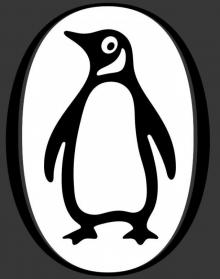 The Surgeon of Crowthorne
The Surgeon of Crowthorne Korea: A Walk Through the Land of Miracles
Korea: A Walk Through the Land of Miracles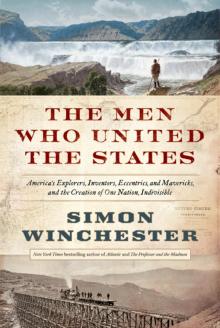 The Men Who United the States: America's Explorers
The Men Who United the States: America's Explorers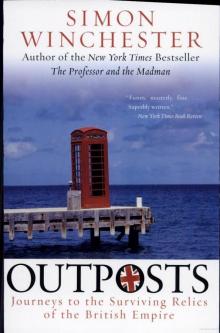 Outposts: Journeys to the Surviving Relics of the British Empire
Outposts: Journeys to the Surviving Relics of the British Empire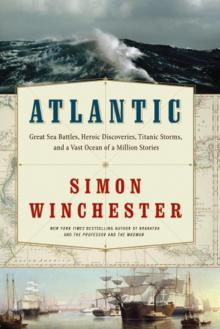 Atlantic: Great Sea Battles, Heroic Discoveries, Titanic Storms
Atlantic: Great Sea Battles, Heroic Discoveries, Titanic Storms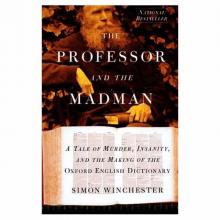 The Professor and the Madman: A Tale of Murder, Insanity
The Professor and the Madman: A Tale of Murder, Insanity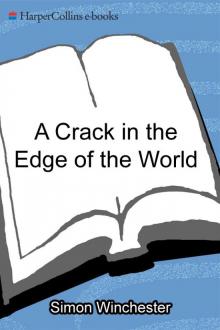 A Crack in the Edge of the World
A Crack in the Edge of the World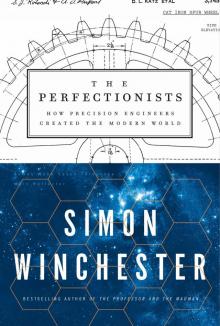 The Perfectionists: How Precision Engineers Created the Modern World
The Perfectionists: How Precision Engineers Created the Modern World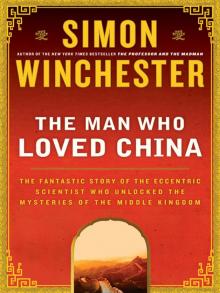 The Man Who Loved China: The Fantastic Story of the Eccentric Scientist
The Man Who Loved China: The Fantastic Story of the Eccentric Scientist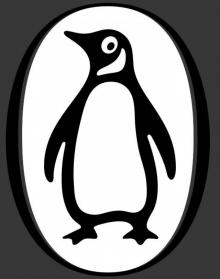 The River at the Center of the World: A Journey Up the Yangtze
The River at the Center of the World: A Journey Up the Yangtze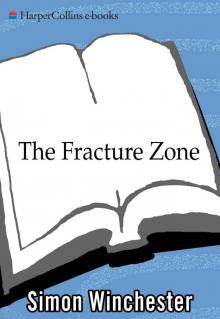 The Fracture Zone: My Return to the Balkans
The Fracture Zone: My Return to the Balkans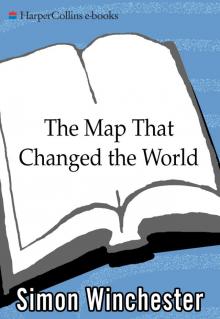 The Map That Changed the World
The Map That Changed the World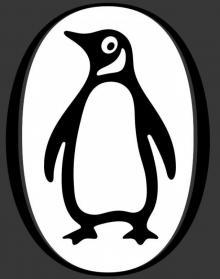 Krakatoa: The Day the World Exploded
Krakatoa: The Day the World Exploded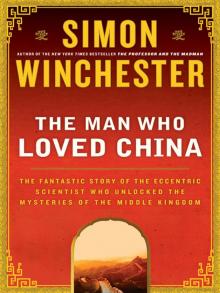 The Man Who Loved China
The Man Who Loved China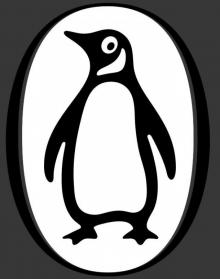 The River at the Centre of the World
The River at the Centre of the World Bomb, Book and Compass
Bomb, Book and Compass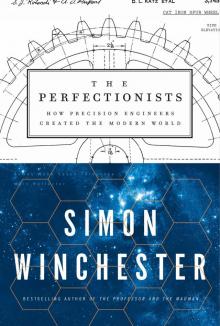 The Perfectionists
The Perfectionists The Meaning of Everything
The Meaning of Everything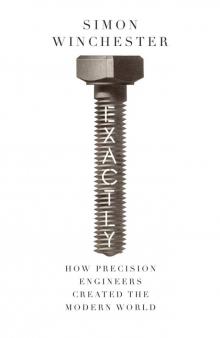 Exactly
Exactly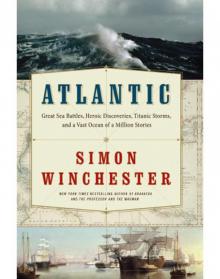 Atlantic
Atlantic Korea
Korea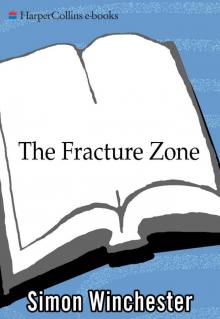 The Fracture Zone
The Fracture Zone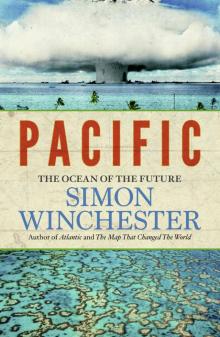 Pacific
Pacific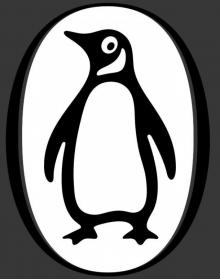 Krakatoa
Krakatoa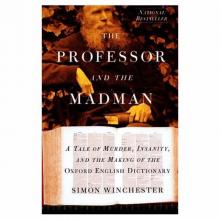 The Professor and the Madman
The Professor and the Madman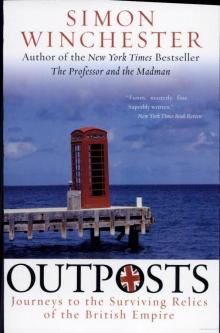 Outposts
Outposts